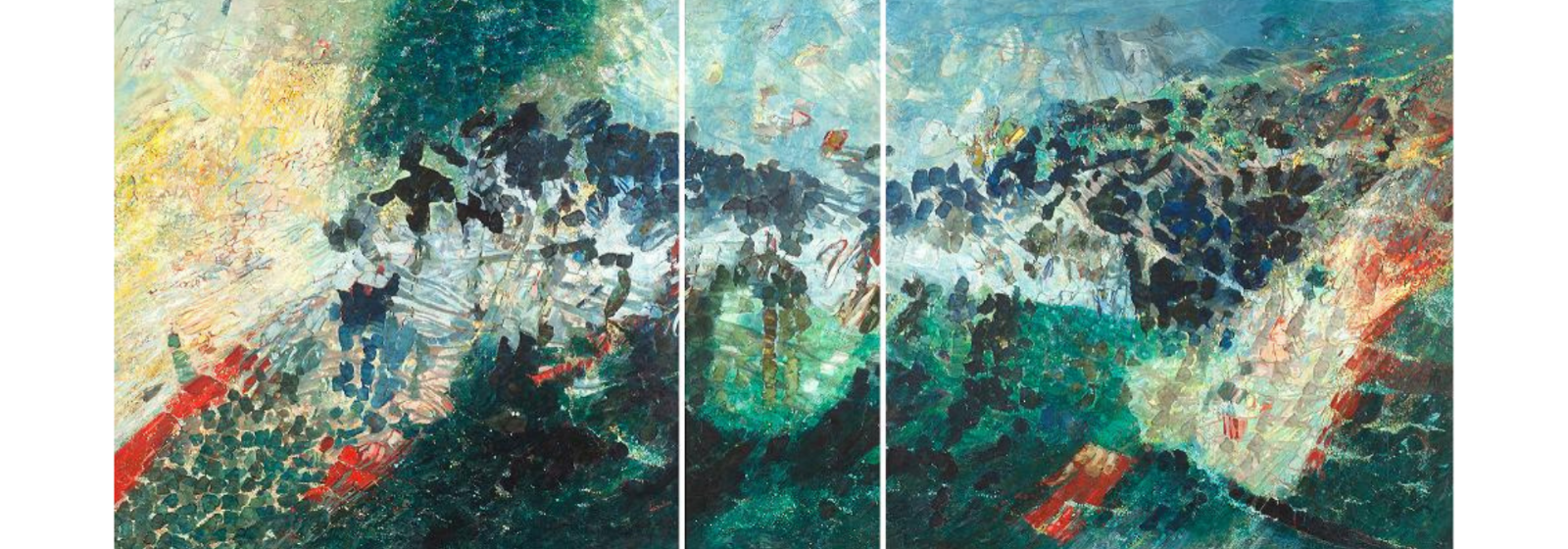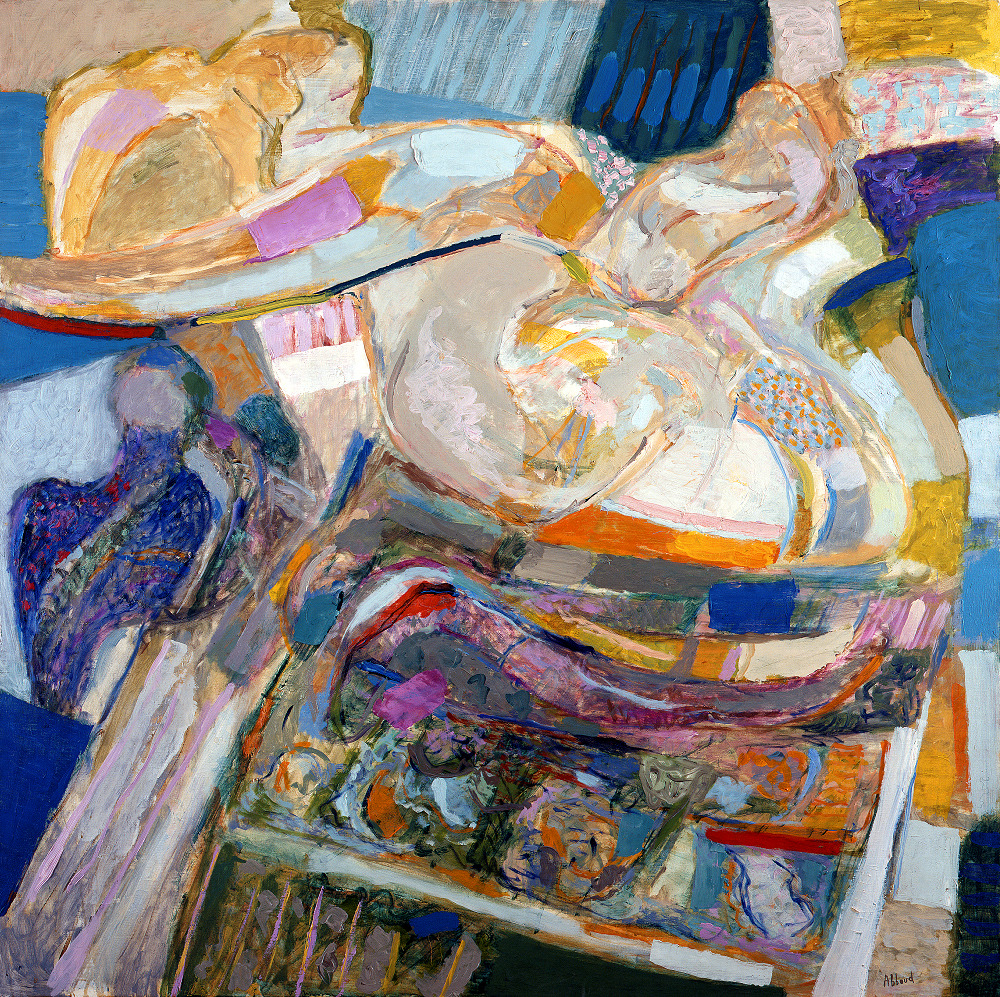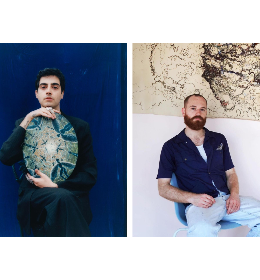
Jack Lang & France and Claude Lemand - IMA 5 avril 2024. Copyright Photo Dahmane, Paris.
In his speech during the ceremony, Jack Lang acknowledged the museum's gratitude for the contribution made by France and Claude Lemand. He highlighted how their donation has elevated the IMA to become the first "Museum of Arts from the Arab World, from Antiquity to the present day" in Europe and the West. Lang praises the museum’s collection as possibly the most comprehensive and representative of Arab civilisation's heritage and artistic expression.
Within the Lemand Donation, an array of modern and contemporary painters, sculptors, photographers, and visual artists are represented. These artists advocate for cultural and societal dialogue, and denounce obscurantism, racism, as well as various forms of violence, while respecting the principles of law and universal values, as stated by Claude Lemand.
The donation includes Lebanese artists Shafic Abboud, Etel Adnan, Farid Aouad, Sara Abou Mrad, Abed Al Kadiri, Ayman Baalbaki, sculptors Michel Basbous and Chaouki Choukini; Algerians Baya, Abdallah Benanteur, Abdelkader Guermaz, Zoulikha Bouabdellah, Syrians Youssef Abdelke, Ziad Dalloul, Simone Fattal; Iraqis Ismail Fattah, Dia Al Azzawi; Moroccan artists Farid Belkahia, Mohamed Lekleti; Egyptian artists Abdel Hadi Elgazzar, Nabil Boutros, etc. The donation also comprises works by Swede artist Bengt Lindström, Argentinian artist Antonio Segui, Japanese Manabu Kochi, Vladimir Velickovic, Hervé Télémaque, of Haitian origin, and Zadkine.
Dia Al-Azzawi, Peace Lover, 1986. Acrylic on terracotta. Pièce Unique. Donation Claude & France Lemand. Museum, Institut du monde arabe, Paris. Copyright Photo Alberto Rici, Paris.
Etel Adnan, Paysage, 2014. Donation on Claude et France Lemand. Musée, Institut du monde arabe. Copyright Photo Alberto Rici, Paris.
During his speech, Claude Lemand shared that he feels deeply connected to a certain Lebanese spirit, characterised by cultural dialogue, global openness, and a spirit of innovation and risk-taking. He expressed his happiness and pride in carving a path forward, inspired by the legacy of great artists and writers from the Mashreq and the Maghreb, who follow in the footsteps of Khalil Gibran and the pioneers of the Arab Renaissance. These figures, in turn, draw inspiration from the values of the French Enlightenment: Liberty, Equality, Fraternity, and Secularism. Lemand emphasised his dual identity, stating that he feels 100% Lebanese of Arab culture and 100% French of French culture.
Shafic Abboud, Confidences, 1981. Donation Claude & France Lemand. Musée, Institut du monde arabe. Copyright Photo Alberto Rici, Paris.
Together with his wife France (the granddaughter of writer and resistant Claude Aveline), Claude Lemand began his art collection in Egypt back in 1981. At that time, his country, Lebanon, was in the midst of a civil war, and he endured the challenges of living in a country torn by war. After a career in teaching at universities in Lebanon, Egypt, and Sudan, Claude Lemand opened his gallery in Paris in 1988. At that time, he was one of the first to advocate for Arab art in Europe and, exhibiting artists who have since gained universal recognition as modern art masters including Abdallah Benanteur, Shafic Abboud, Etel Adnan, Mohammed Melehi, and Farid Belkahia.
France and Claude Lemand are both convinced of the place that art should play in fostering unity, facilitating dialogue, and promoting acceptance of others. The fulfilment that art allows is lifesaving. These universalist values lie at the core of their collection, which is now being passed on to the public at a time when hatred is more virulent than ever. The collection, described by Claude Lemand as a "luminous portrayal of artists from the Arab world", serves as a manifesto.
The generous contribution from France and Claude Lemand enables the IMA to evolve further. Anticipating the unveiling of the New IMA Museum by late 2026, the institution aims to provide an interdisciplinary journey spanning arts, sciences, history, music, poetry, philosophy, gastronomy, languages, and more.

Legion of Honor ceremony, April 5, 2024 at the IMA. Copyright Photo Dahmane, Paris.
With this in mind, the Barjeel Foundation has funded the Donors' Space, showcasing the artworks from the Lemand Donation. Since 2018, France and Claude Lemand have been deeply engaged in organising and financing various IMA events such as the recent exhibitions "Baya, icône de la peinture algérienne", a huge success at both the IMA and the Vieille Charité à in Marseille, France; "Lights of Lebanon. Modern and Contemporary Art from 1950 to Present", organised a year after the dramatic explosion of the port of Beirut; and "Algeria my love" in 2022. Alongside donors such as The Levant Foundation in Houston and the Barjeel Art Foundation in Sharjah, France and Claude Lemand actively fulfilled their role as patrons.
During the ceremony on 5 April, many artists, intellectuals and figures from the art community gathered to honour the couple. Among them were poet Adonis, the gallerist Saleh Barakat, Sultan Sooud Al-Qassemi, founder of the Barjeel Art Foundation in Sharjah, and artists such as Halida Boughriet, Abed Al Kadiri, Anas Albraehe, Denis Martinez, Khaled Takreti, and Sara Abou Mrad. Claude Lemand dedicated his decoration to them, expressing confidence in their mission to elevate and document the world through art.
Cover image: Abdallah Benanteur, L'Elu, 1987. Triptyque. Donation Claude & France Lemand. Musee, Institut du monde arabe. Copyright Photo Alberto Ricci, Paris.












